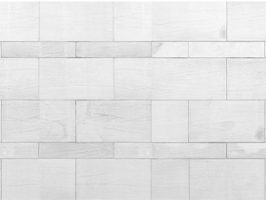Is your light marble mysteriously turning dark? Read this article to learn why and what you can do to help protect it from certain damage that causes darkening.
Marble turning dark can be caused by multiple factors, and understanding these reasons is especially important for effective maintenance and preservation. Marble is a metamorphic rock composed primarily of calcite or dolomite crystals, and its natural beauty can be affected by both external and internal factors.
- One common reason for marble darkening is surface staining. Spills of acidic substances, such as coffee, wine, or citrus juices, can etch the surface of marble, leading to discoloration.
- Another cause is exposure to metal objects or water having high mineral content may cause rust or mineral deposits, darkening the marble's appearance.
- Another significant factor is the absorption of environmental contaminants. Marble is porous, meaning it can absorb liquids and gases. Air pollution, especially in urban environments, can deposit pollutants onto the surface of the marble, causing it to darken over time. This is particularly evident in outdoor installations where the marble is exposed to the elements.
- Natural aging and weathering contribute to marble darkening. Sunlight exposure can lead to the breakdown of the stone's minerals and alter its color. Over time, the surface may develop a patina, which in its own rite can be very beautiful.
- Inappropriate cleaning methods can worsen the issue. Harsh chemicals or abrasive cleaners can damage the marble's surface, making it more susceptible to staining and darkening. It is essential to use pH-neutral cleaners designated safe for stone surfaces to preserve the marble’s beautiful look.
Preventing marble darkening involves a combination of proactive measures. Sealing the marble surface helps reduce its porosity, making it less prone to staining. Regular cleaning with a gentle, stone-friendly cleaner removes surface contaminants. Avoiding contact with acidic substances and promptly addressing spills can also prevent discoloration.
The darkening of marble can be attributed to many factors, including staining, environmental pollutants, natural aging, and inappropriate cleaning methods. Understanding these reasons allows for the implementation of proper maintenance practices to preserve the beauty of marble surfaces over time.
By Sharon Koehler. This article is one of a series of articles written and published on behalf of Surface Care PRO Partners.

